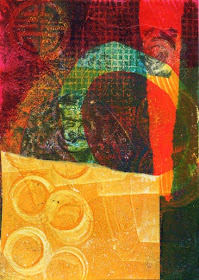What is a series?
Simply put, it is a group of pieces based on a common element or
group of elements: subject matter, technique, a particular set of materials, a group of visual elements, or
a compositional format. A series can be created in an afternoon – as
in a group of quick collage studies – or last a lifetime. Many artists
keep several series going throughout their careers.
- Working in series allows you to explore ideas more thoroughly, give them some breathing room, and try out different solutions to visual "problems".
- Working in series gives your art practice focus and momentum.
Rather than face the blank canvas with too many possibilities to choose
from, the parameters of your series create clarity of intention.
- By considering the series the basic unit of art making, you
lose the preciousness of the individual piece, the fear of “ruining”
it, which can keep you stuck. Get un-stuck by working in multiples.
Some people find the prospect of
Creating A Series somewhat daunting, though. When I talk about working in series I mean to focus on
the process: working in multiples as a practice, not as a goal. When you begin just one piece, you have some investment in its Coming Out Right. If you begin ten pieces in a similar way, you can try all kinds of ways to continue, and maybe resolve, the "proposition" put forth in the beginning.
I made this piece in my Layering with Transparencies workshop at Art and Soul in Portland:
This combination of elements seemed to merit a little more exploration, so I began a series using similar elements. I haven't yet put the transparent collage pieces on, or developed them further (that is Part 2), but simply made some beginnings. Here is a little video of the process:
And here are five of the pieces of this series at their beginning stage:
My workshop theme for 2014 is "Series as Process", so any of the longer workshops you take will incorporate working in series. The longer workshops (2 - 5 days) that are not yet full include:
Meanwhile, give it a try if you haven't already. Stay tuned for Part 2, where I create some transparent collage materials and develop these pieces a bit more.




























